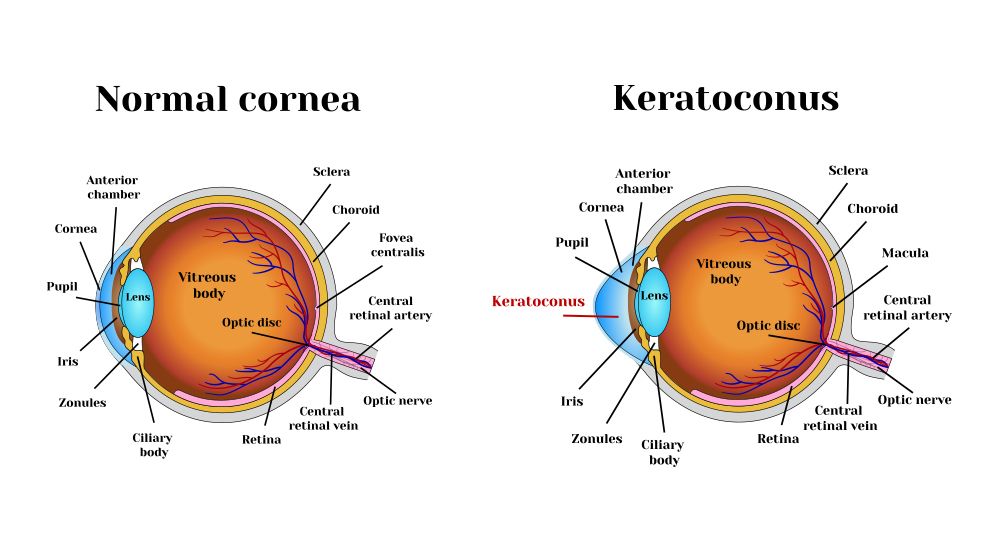
Millions of people in the United States live with vision impairment. In many cases, refractive errors such as nearsightedness, farsightedness, and astigmatism are conditions caused by natural irregularities in the shape of a patient’s cornea.
However, vision impairment can also develop as the result of certain eye diseases, such as keratoconus, a degenerative condition that alters the shape of the cornea. Astigmatism is one potential side effect of keratoconus.
Experienced ophthalmologist Andrew E. Holzman offers treatment for keratoconus and astigmatism to our Washington, DC, patients, allowing them to see clearly and continue performing essential daily tasks. Here, patients can learn more about how keratoconus can lead to astigmatism, and how it can best be treated.
What Is Keratoconus?
Keratoconus is a progressive condition that can begin as early as the teenage years. Keratoconus develops when the tissues of the cornea weaken. As collagen in the cornea breaks down, the cornea thins, and the shape of the cornea can change.
When a patient suffers from keratoconus, they develop a dome-shaped cornea rather than a rounded one. The irregular dome shape alters the way light enters the cornea and is processed by the retina. As a result, vision will be impacted.
Irregular Astigmatism
Astigmatism is one common side effect of keratoconus. In fact, many patients suffer from astigmatism before they have been diagnosed with keratoconus. As astigmatism worsens and the shape of the cornea changes, it becomes more obvious that keratoconus is responsible for vision loss.
Astigmatism that is related to keratoconus is referred to as irregular astigmatism. Irregular astigmatism is the direct result of the dome-shaped cornea that defines keratoconus. Patients with irregular astigmatism will experience a general blurring of vision, whether they are looking at things at near or far distances.
Irregular astigmatism cannot be treated with LASIK surgery. Instead, patients can preserve vision by managing their keratoconus.
Keratoconus Treatment
Like many progressive eye diseases, there is no cure for keratoconus. However, with treatment, patients can keep the condition under control so that they continue to enjoy clear vision.
Here are three common treatment methods for keratoconus and the irregular astigmatism it can cause:
- Prescription eyewear: Prescription eyewear is often the first line of treatment for keratoconus. In most cases, keratoconus is managed through the use of hard contact lenses. Hard contact lenses help restore a more rounded shape to the cornea, while providing patients with a prescription lens that enhances vision.
- Cross-linking: Cross-linking is a fairly new development in the field of keratoconus treatment. Cross-linking uses a combination of riboflavin eye drops and exposure to ultraviolet light to strengthen corneal tissues that have weakened, which helps in restoring a more rounded cornea.
- Intacs®: Intacs® are surgically implanted lenses that essentially act as a permanent contact lenses. They hold the cornea in proper position to improve visual focusing.
- Corneal transplant: A corneal transplant involves removing a cornea that has been effected by keratoconus and replacing it with a donor cornea. Although a corneal transplant can provide effective results, it is a last means of treatment that should only be considered if other treatment techniques fail to provide desired results.
Contact Us
Keratoconus is a progressive condition that can lead to astigmatism and other visual abnormalities. If you would like to learn more about treatment options for managing this condition and preserving clear vision, contact us at your earliest convenience.



